7 tips and tactics for home and furniture marketers to succeed in an era of home transformation
COVID-19 has made home much more than where we live. It’s where we work, go to school, exercise, relax, recharge, shop, and do just about everything else. Our houses and apartments have become essential centers where we gain a sense of control and comfort in uncertain times.
Updated on 26 Sep 2025
It’s no surprise then that people are investing more in their homes. They want to make them more practical, comfortable, and reflective of their personalities and values. These investments, naturally, are being made online.
Media analyst ComScore reported record online spending of over $12 billion for furniture, appliances, and equipment in spring of 2020.1
As we move into spring and summer 2021 — and start to get the lawn cleaned up, the garden growing, and (hopefully) gather for backyard barbecues — strong demand continues.
The Home Improvement Research Center reports the outlook for home improvement projects remains higher than normal with fewer project cancellations and even fewer cancelled due to COVID-19.2
These factors paint a positive picture for online home improvement and furniture brands. But to seize the moment you need to provide relevant, thoughtful, and personalized experiences at every touchpoint across the customer journey.
Here are seven digital marketing tips, tactics, and techniques — both simple and sophisticated — to help make it happen.
#1 Personalize, no really personalize promotions
The online home and furniture market is a competitive space. Juggernauts like Wayfair, Ikea, and Amazon are battling it out, along with plenty of disruption from D2C players. To stand out, you need to go well beyond simply addressing prospects by their first name.
Fortunately, with some basic information you can craft truly personalized and powerful messages. Do you know…
- Which visitors have browsed what content?
- What ads have they engaged with?
- What products have they added to their cart?
- What products have they purchased?
- Which emails have they opened, and what actions have they’ve taken?
Let’s say you have a visitor that has browsed reclining lounge chairs and couches, bars with wine and cold storage, linear pool table lights, and has already purchased a TV console.
With that basic information, you can use AI to perform predictive segmentation and showcase recommended products like bourbon-barrel end tables, bar stools, and a reclaimed wood wine rack in your promotions and channels.
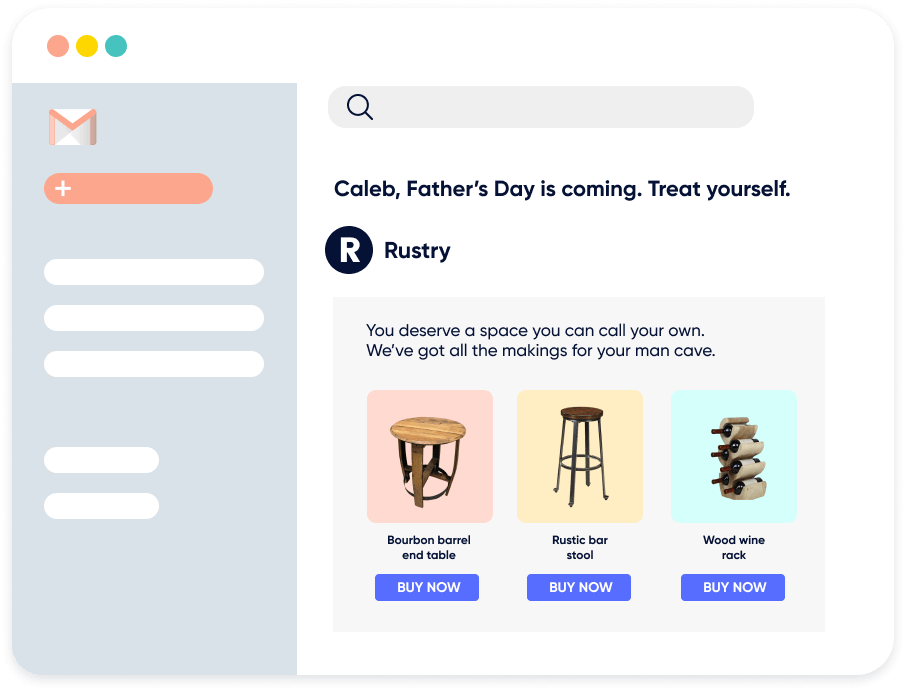
#2 Categorize for convenience with smart segments
It may seem like a no brainer, but somebody redoing their bathroom doesn’t want to scroll through garage shelving when they click to your site, either from a promotion or through organic search. They want to find what they need for their space or project in a logical, centralized, and helpful way.
You can use smart segments to align buyers with your content when they arrive. This enables users to have one place that displays the specific items relevant to their living space or project. These segmented categories can give product discovery and selection a big boost because you’ve personalized the choices and you’re offering a type of pre-built shopping list and process for the customer.

#3 Location-based segmentation
One of the fastest, easiest ways to communicate to customers that you understand where they’re coming from is geotagging.
Geotagging adds global positioning to an image or your website and embeds location-specific information.3 Customers are able to click on your site or app and see that it automatically knows what country or state they’re in, what currency they use, and more — and it means less clicks and swipes for them to understand what you offer in their part of the world.
Maybe most important, it makes your site “feel like home.” It’s a great start to making the experience feel personalized.
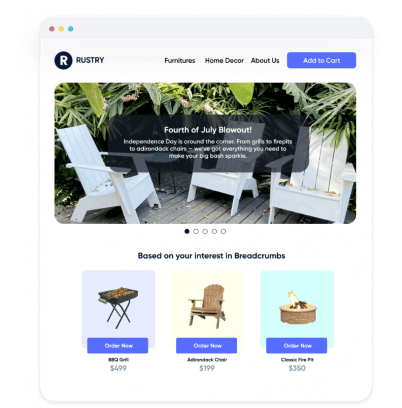
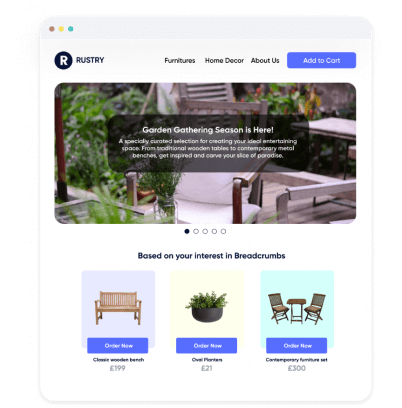
It doesn’t have to be an international affair, home improvement retailers can use geotagging capabilities to show customers the stores near them, store hours, and contact information.
You can add the most popular items and present special offers. Display patio furniture deals in southern regions, for instance, or window insulation kits in colder climates.
#4 Show, don’t tell
We know online experiences aren’t limited to text. Just look at the ubiquity of video. And we’ve all heard that the human brain processes visual information 60,000 times faster than text and 90% of information transmitted to the brain is visual.
You can put to this to work by visualizing your products to improve visitor engagement.
Mattress maker and online eCommerce retailer, Emma, uses an annotated cutaway of its product to highlight key features in a way that you can see. Not just read about.
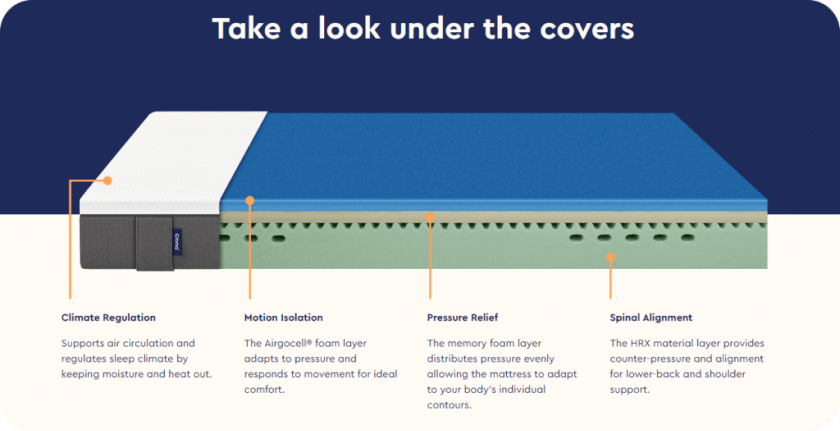
Being able to zoom in on product visualizations or manipulate 3D renderings and images can also help boost interest and engagement.
Use clickable images that highlight features when a mouse hovers over them. Let visitors see the range of colors a sofa or armchair comes in as they glide over the picture.
Use photography of beautifully staged natural rooms to help visitors build a story in their minds of how purchases will look and feel in their homes.
Or, explore scalable CGI and AR to give shoppers inspiration and even let them picture how accessories will look in their own rooms.
From previewing exterior paint colors to seeing how a desk will look in a corner, the potential is virtually limitless.
Take it a step further to and use AI recommendations to pair the items shoppers are interested in with complementary accessories. For example, if they’re buying an art deco coffee table, show them the matching art deco end tables to complete the look and inspire them to buy more.
You can also use infographics, short videos, and demos for more complex offerings that show how to put together a new workbench or build kids’ bunk beds.
#5 Create urgency and provide social proof
Buying personas for home and furniture providers can fall into a number of categories. Two of the most notorious are the discount chaser — “I expect the best deal or no deal” and the procrastinator — “I add items to my cart, but don’t check out, especially for big ticket items like furniture.”
One way to address the needs of these two is a countdown timer. Emma uses a countdown timer on its homepage to help discount chasers and procrastinators move to action.
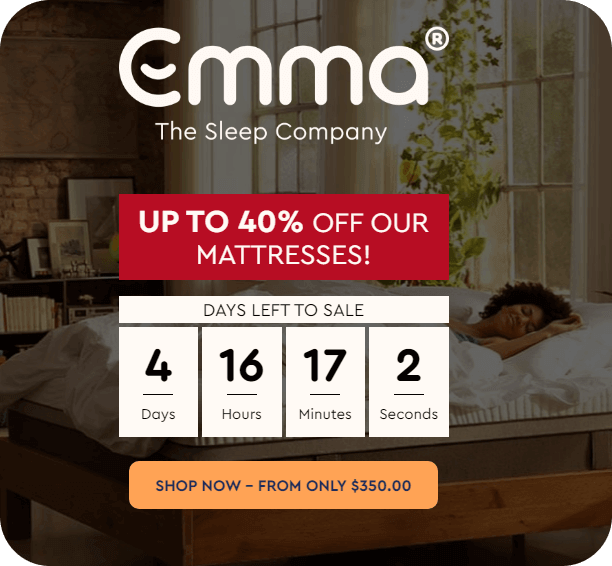
Using this Insider feature, the brand creates urgency and desire even for consumers who will only buy at a discount or are putting off purchasing until that one last incentive compels them to buy.
Perhaps the toughest customer persona is the window shopper — “Inspired by design blogs and social media, I click through retail websites sites, but I don’t buy.” A combination of the countdown timer and social proof technique can help convert window shoppers. Emma employs social proof by showing customer ratings on its product tiles.
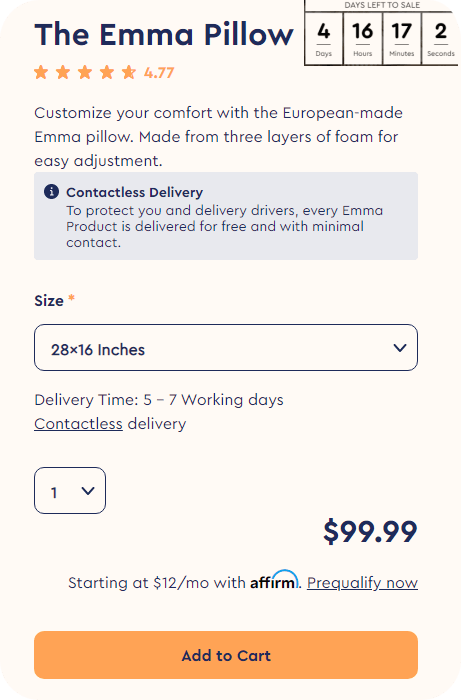
Window shoppers are influenced by others. They may have been drawn to the site or product from a link on a blog or social media. Once there, the window shopper can verify that it’s a popular, quality item. When paired with the countdown timer, they see a double incentive: it’s popular and at a really good price — but I have to act now.
#6 Cross-sell and upsell
Furniture brands and home purchases tend to be big-ticket items that require a lot of consideration and long purchase cycles. The good news is that these items are seldom bought in a vacuum. If you have that new dining room table, maybe you need a new sideboard and chairs to match, or new lighting to show it all off. Upsell and cross-sell techniques can help maximize average order value.
Recently-viewed tabs or drop-downs can help visitors keep track of their own buying journey. They won’t need to click back and search for where they were. You can make their journey easier and begin to build a shopping list for them based on their own interests.
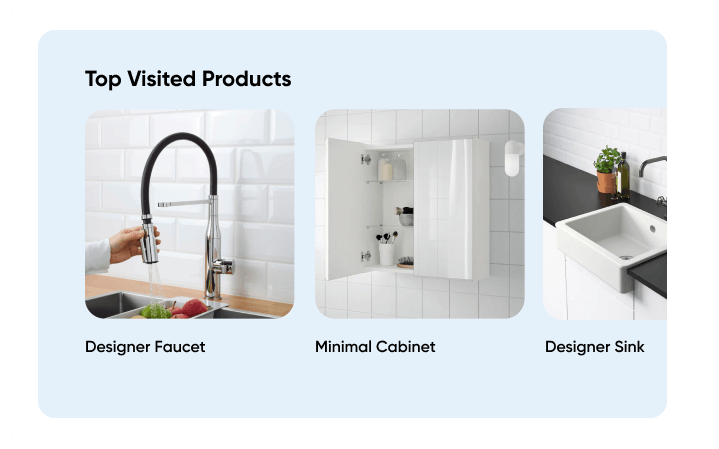
Since-you-liked-this recommendations based on past purchases and communicated in emails or onsite is a great upsell and cross-sell marketing technique. Maybe that new dining room table could use a worthy centerpiece.
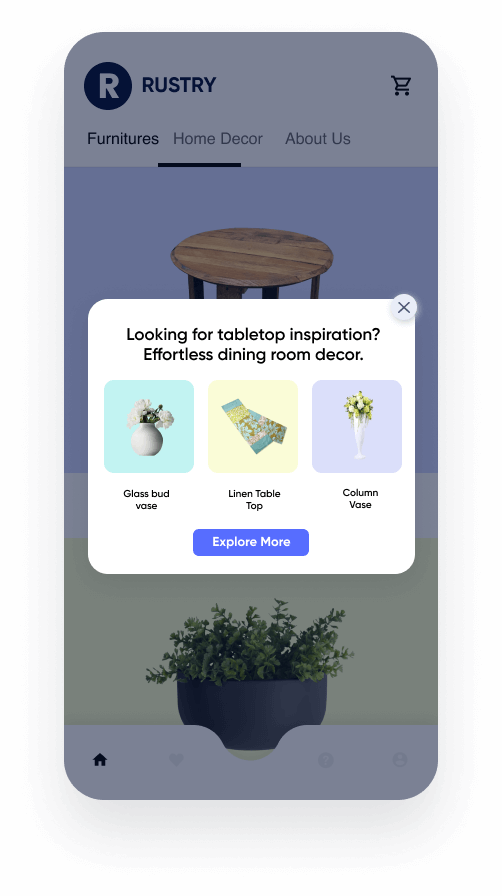
Both of these approaches show you understand the visitor’s needs. It’s almost as if you’re shopping along with them and providing expert advice based on their personal interests and projects. You can work together to create an optimized vision in their minds of that dream kitchen or new patio and increase what they put in their carts and buy.
#7 Keep them coming back
Tactics for keeping customers interested, engaged,and excited about what you’re selling can be challenging, but they can also be tremendously powerful.
One way is to send post-purchase emails with product recommendations or special offers, but these can be annoying, and you may end up in their spam folder.
With Insider’s tools you can avoid the inbox by pushing flash notifications directly to users’ devices.
Let’s say somebody was looking at a new barbecue set and even put a few items in their cart, only to exit without making a purchase. You can employ exit-intent technology and personalized overlay price alerts to bring them back and buy. This is a great approach for discount chasers who just need a price-break to seal the deal.
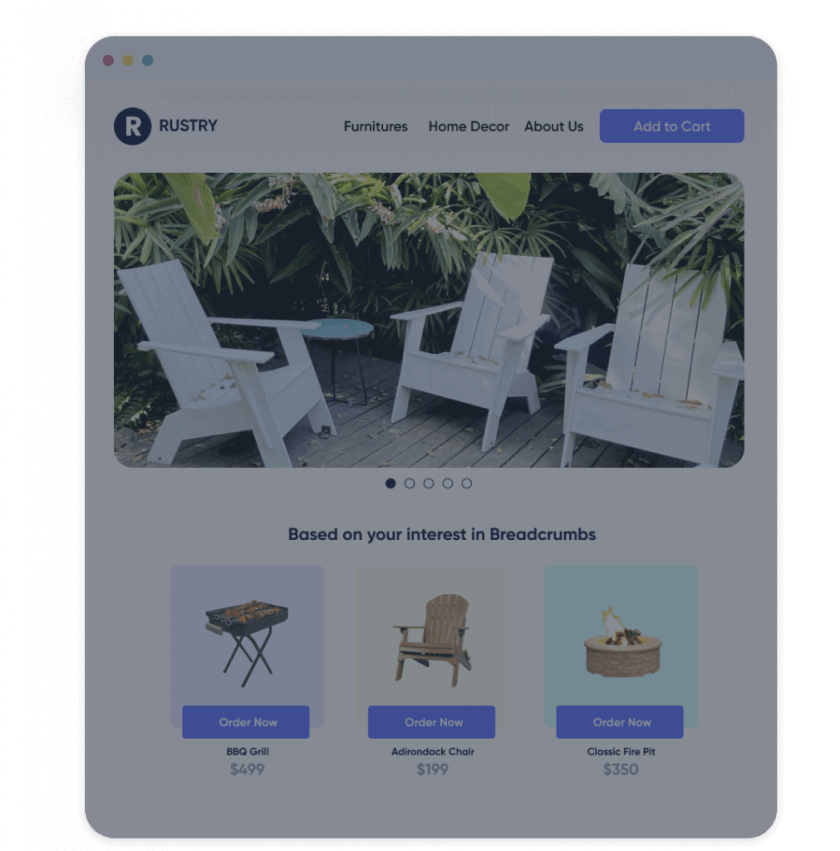
Push notifications can also create urgency by letting customers know about limited availability (hello procrastinators). If it’s an item the customer has been looking for, you can let them know how many are in stock and that it may soon be gone if they don’t act soon.
This is a fairly sophisticated technique, but it’s a surprisingly easy feature to make part of your eCommerce site by simply adding a single line of JavaScript.
Conclusion
Hopefully, COVID-19 will soon be behind us, but the change it has brought is undeniable. Some estimates say at least 25,000 retail stores in the US may close their doors permanently.4 Consumers have moved online to shop for the goods and services they want to enrich those spaces that are now even more central to their everyday lives. For home and furniture marketers, it’s an opportunity to make those shopping experiences easier, more personal, and more rewarding than ever before.
Ready to get personal? Explore how to create high-converting, one-to-one marketing and eCommerce experiences in our Home & Furniture Digital Growth Guide.



















